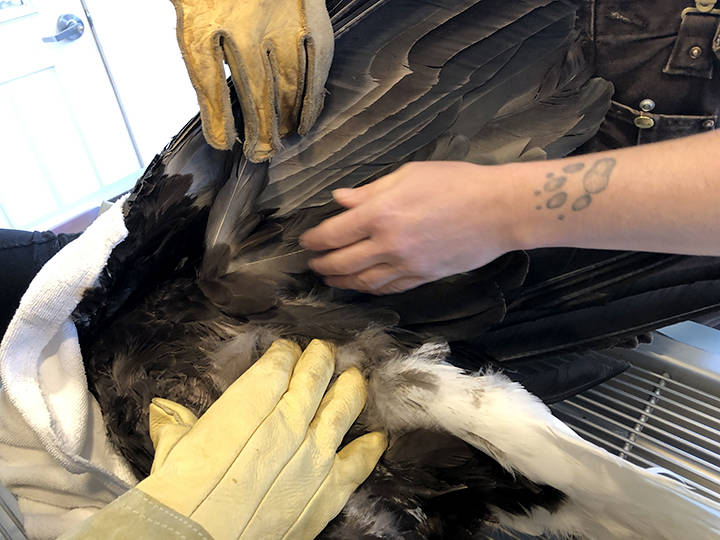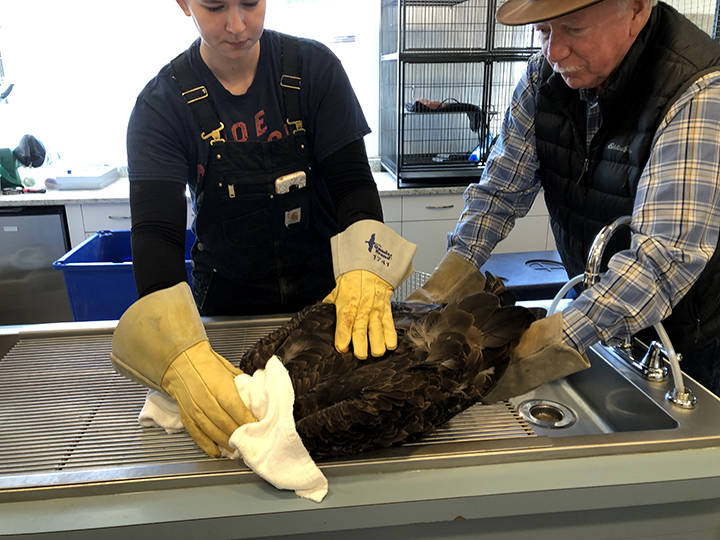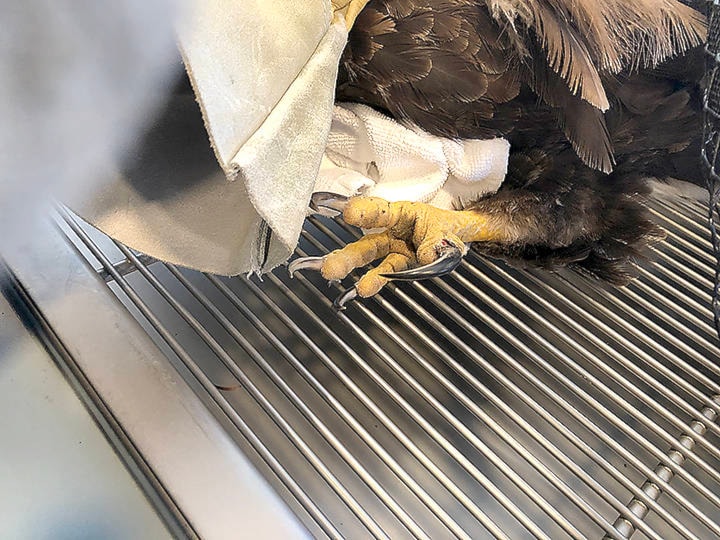An injured eagle was rescued by a few members of the Cheslatta- Carrier Nation this past week. Mike Robertson, who works as a senior policy advisor for the Cheslatta-Carrier Nation, was told by a neighbour last Tuesday night that a wounded eagle was hobbling around his property. By Wednesday, he had gathered a team together to try to help the creature as best they could.
“Wednesday we were busy… the bugger just kept flying up high on one wing, so we couldn’t get him. So on Thursday, we mobilized about eight people and we had nets and big tubs, and we went down and searched and finally found him,” he said.
From there they spent hours trying to catch the bird again, who was impressing them all with how agile and fast he was, despite his injuries.
After finding him under a bush, a young man with the group slipped a dip net (normally used for salmon fishing) over the bird, and they put him a tub with a cover on it.
The team then hopped on the ferry and drove 140 kilometres to take the bird to Smithers, where the Northern Lights Wildlife Society was. It was later sent to the OWL Rehabilitation Society in Delta, BC, because eagles and other raptors are their speciality.
Reflecting on the effort it took to capture the bird, Robertson laughed as he recalled the bird, once captured and in the tub, reaching out with its sharp beak to try to take a chunk out of whoever was nearest to it. Luckily, the victim—who wound up with the beak clamped around his foot—was wearing steel toed boots.
Just to share how truly skillful, and geared to hunt they are, National Geographic says the wingspan can be up to eight feet wide, and they can dive bomb at prey on the ground or in the water, at 100 miles an hour. And they don’t fool around with vegetables—they are strictly carnivores (meat-eaters).
“Being First Nations people here, the eagle is a symbol of strength and freedom and power… When you wonder what you’d like to be if you weren’t human, most people would say an eagle because of their power and their eyesight, and their ability to look down upon us crazy people walking around on two legs,” said Robertson, on why it felt important to try to help eagle.
“it was very special to see everybody get together and capture the poor guy, and get him the care that he needs,” he added.
Robertson also said he and his co-rescuers are extremely grateful that both Northern Lights and OWL exist, to do the work they do and help this particular eagle.
OWL raptor care manager Rob Hope, whose been with organization for 25 years, was part of the crew looking over the eagle when it came in. He confirmed it was a male bird with injuries that looked to be from fighting with another eagle.
It had a bare patch on its chest, swelling near its right wrist, a large gash on the left side of the chest, and puncture wounds in the leg, he said.
The wing injury was likely from crashing into something during the fight—a road, or nearby tree, or something of that sort.
Once the swelling goes down, they’ll put a few stitches in the chest, and watch the wing to see the damage then. Eventually the bird will go in their 300 foot free-flying pen, and if it flies strong enough, it will be released where it was found.
So far, it looks hopeful, said Hope.
“Health wise, he looks in pretty good shape, like weight wise. We’re going to give him a whirl and see what happens,” he said, adding they’ll know more later in the week.


